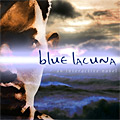Blue Lacuna — 161 of 467
Aaron A. Reed
Section - The Girls' Paintings
An artwork is a kind of prop. Understand "painting" as an artwork. Instead of doing anything to an artwork when location is Studio and ( night or dawn or twilight ) , say "It's too dark in here now to see the paintings in any detail." Check entering an artwork: try wayfaring instead. First check wayfaring when location is Studio: say "You only wayfare through your own paintings, and then only at the moment you finish creating them. These paintings have no power." instead. Check attacking an artwork: say "They're too beautiful for that." instead. The dream-text of an artwork is usually "carelessly piled paintings, so dusty and faded they are almost indistinguishable from each other".
Definition: an artwork is opposing if it is not the noun.
To say painting_intro:
if we have not examined Lethe-canvas and we have not examined Phoebe-canvas begin;
say "You step up to the painting and study it carefully. Immediately, you recognize the work of a Wayfarer. The lines and colors are too exact, too perfect, too beautiful to be anything but";
otherwise if we have examined noun;
say "You step up and study the incredible artistry again";
otherwise;
say "This painting is obviously the work of a Wayfarer as well. At first you think the same artist crafted this one, but subtle differences in style instill in you a growing belief otherwise";
end if.
To say painting_close:
if we have not examined Lethe-canvas and we have not examined Phoebe-canvas begin;
say "A rough-hewn wood frame surrounds the painting, in harsh contrast with its elegant beauty. Roughly carved in the lower right is ";
otherwise if we have examined noun;
say "Carved into the rough-hewn frame is ";
otherwise;
say "This painting, too, is roughly inscribed with ";
end if;
say "[paintingnamemsg]".
The painting-word is a minor setpiece in Studio with printed name "word on the painting". Understand "single/word/language" as painting-word. The description is "Carved into the rough-hewn frame is [paintingnamemsg].". The provoke message of painting-word is "Carved into the rough-hewn frame is [paintingnamemsg].".
To say paintingnamemsg:
if the reading level of the player is language-knowing begin; say "a name: '[if noun is Lethe-canvas]Lethe[learn-lethe-name][otherwise]Phoebe[learn-phoebe-name][end if]'";
otherwise if the reading level of the player is vowel-knowing; say "a word in an unfamiliar language, though you recognize [if noun is Phoebe-canvas]some of [end if]the symbols from the clockwork head in the treehouse"; if screen reader mode is false and noun is not painting-word, say ": '[if noun is Lethe-canvas]e--el[otherwise]e-eo--[end if]'";
otherwise; say "a single word in a language you do not recognize";
end if.
Lethe is an abstraction. Phoebe is an abstraction. To say learn-lethe-name: now Lethe is named. To say learn-phoebe-name: now Phoebe is named.
Check touching an artwork: say "You close your eyes and run your hand delicately across the hardened paint, feeling through the lacquered bumps and textures the power of the artist. You wonder what world this one wanders in now." instead. Understand "painting" or "paintings" or "wall" or "on the" or "frame" as an artwork.
Lethe-canvas is an artwork in Studio. The printed name is "[if Lethe is named]Lethe's[otherwise]the[end if] storybook [o]village[x] painting". Understand "lethe" or "lethes" or "storybook" or "village" as Lethe-canvas. The description is "[painting_intro]. [paragraph break]A gently rolling hilltop of lemon-yellow and milky-white wildflowers, fantastically profuse, explodes from the surface of this painting. A large gathering of smiling people in simple clothes of brown and crimson pick the flowers, laughing and smiling: children, parents, aunts, grandmothers, all so richly detailed that you can almost hear them laughing and calling out to each other. The smell of dusty dry pigment somehow suggests the first day of spring, and fresh mountain breezes in a sea-blue sky. Beyond the hilltop a storybook village basks in late morning haze, thatched roofs and cobbles ringed by balding mountaintops, rounded and emerald green.[paragraph break][painting_close].". l-painting-details is part of lethe-canvas. Understand "hill/hilltop/flowers/wildflowers/family/people/clothes/children/parents/aunts/grandmothers/roofs/cobbles/mountaintops/haze" as l-painting-details when location is Studio. Instead of doing anything to l-painting-details, say "The detail in the painting is extraordinary, so rich and alive it's as if it bleeds into your other senses.".
Phoebe-canvas is an artwork in Studio. The printed name is "[if Phoebe is named]Phoebe's[otherwise]the[end if] [o]space[x] painting". Understand "phoebe" or "phoebes" or "space" as Phoebe-canvas. The description is "[painting_intro]. [paragraph break]A huge translucent sphere hovers in the center of this painting, miles wide, reflecting in bulbous crescent the golden light of a warm gold and lemon yellow sun. Inside the sphere is a profusion of life: huge, gnarled trees growing in all directions without gravity to guide them; thick, mossy vines wrapped everywhere and stretching like tiny green threads of emerald through moist air; and people dressed in flowing silver-crimson gowns and wide sea-blue wings, gliding between gilded wooden villages high in the branches of the massive trunks. In the distance, more spheres can be seen, floating serenely amidst the jet black backdrop shining with a million milky stars.[paragraph break][painting_close].". p-painting-details is part of phoebe-canvas. Understand "sphere/space/light/sun/profusion/life/trees/vines/threads/gowns/wings/branches/trunks/spheres/stars" as p-painting-details when location is Studio. Instead of doing anything to p-painting-details, say "The detail in the painting is extraordinary, so rich and alive it's as if it bleeds into your other senses.".
